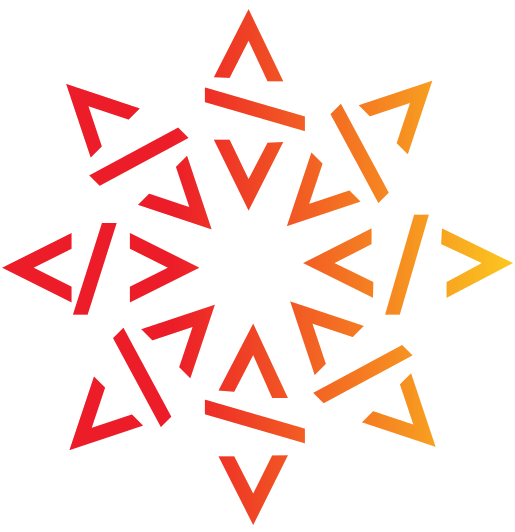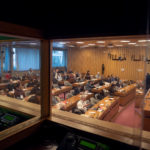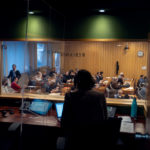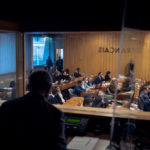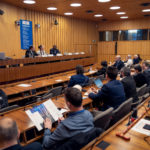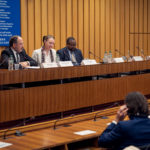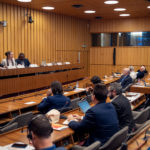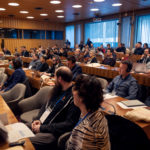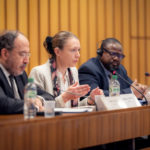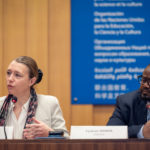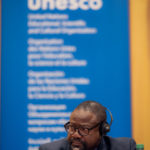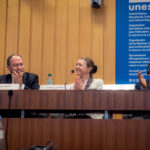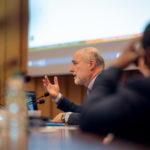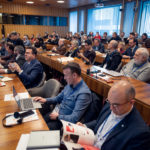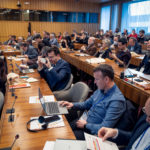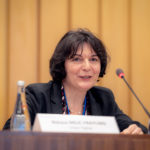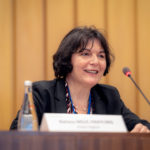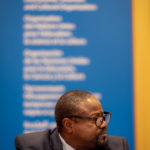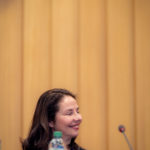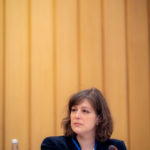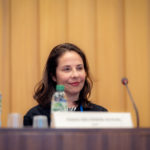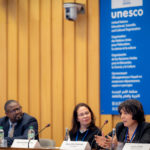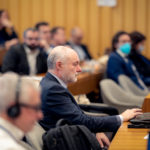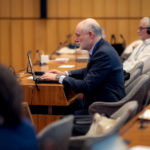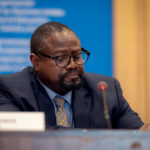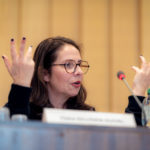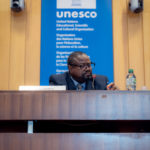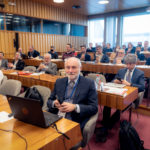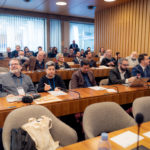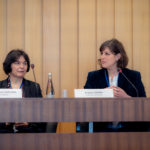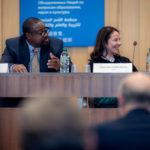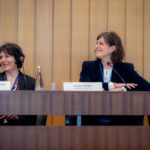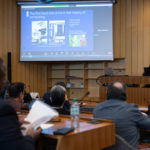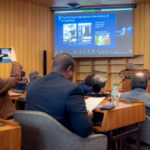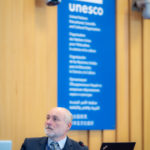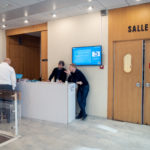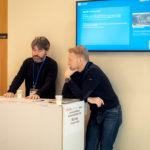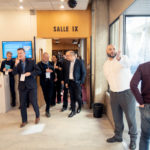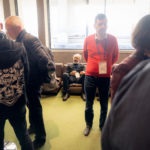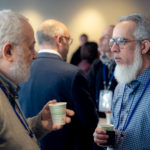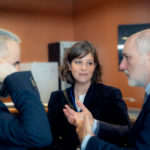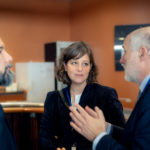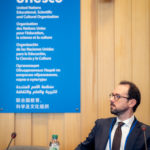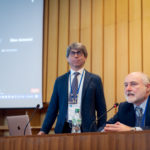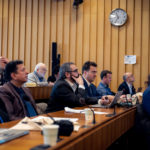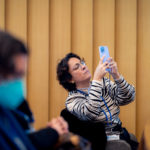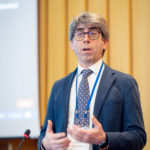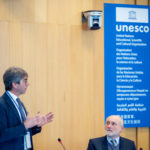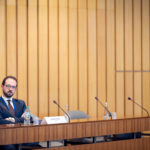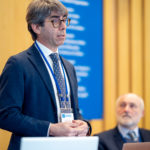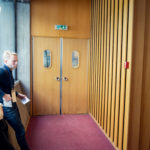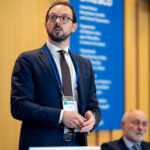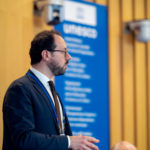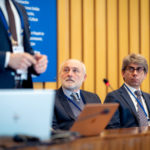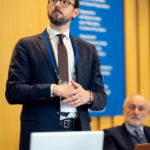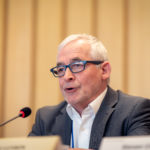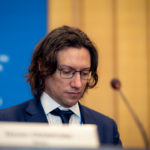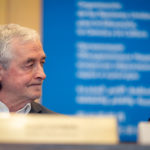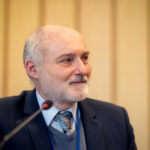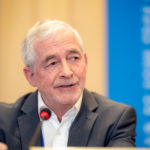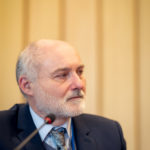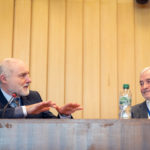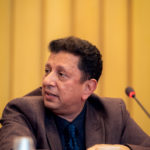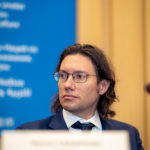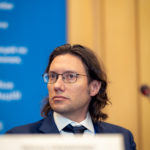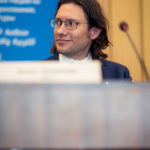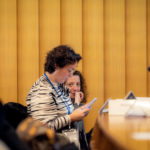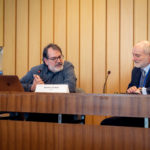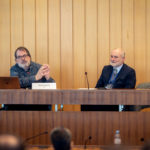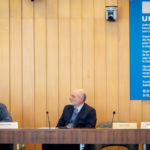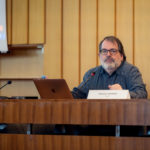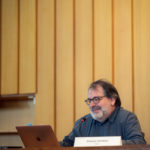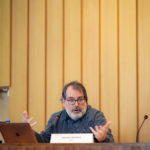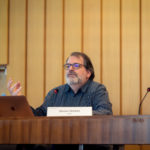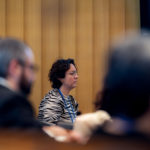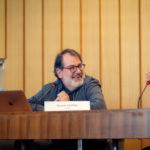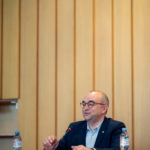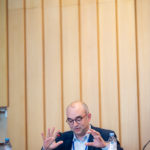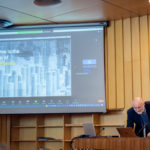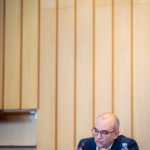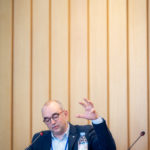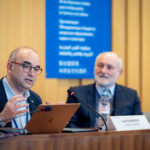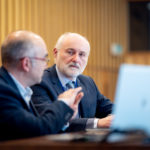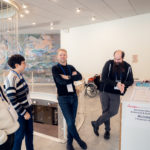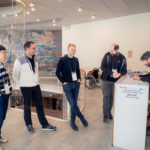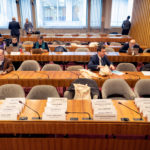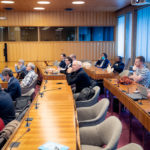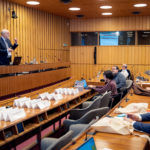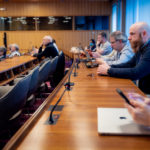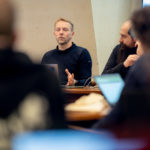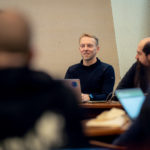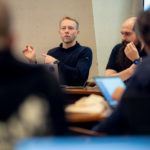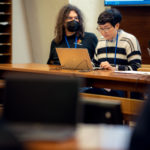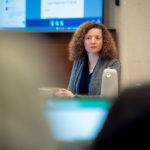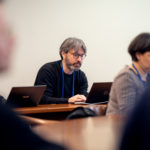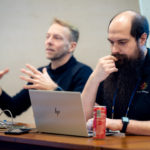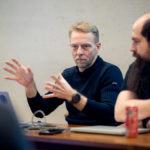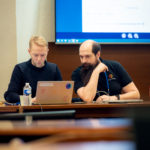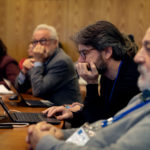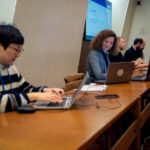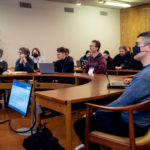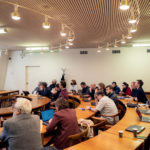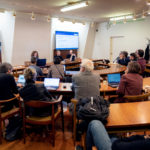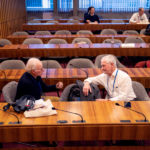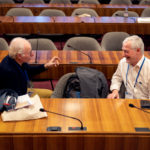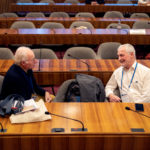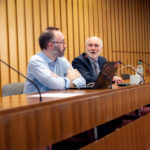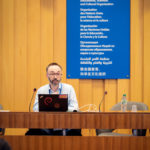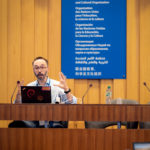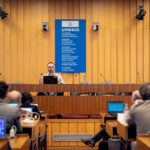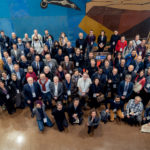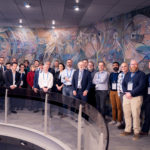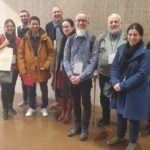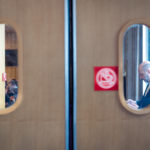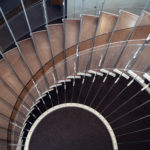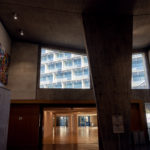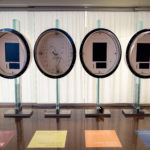Symposium and summit 2023
About
The event took place on February 7th 2023 at the UNESCO headquarters.
You can watch the recording of the event online:
We recommend you the article Positioning software source code as digital heritage for sustainable development by UNESCO.
The full transcript is available in PDF format.
Software Heritage annual community event
Software is all around us: it powers our industry, fuels innovation, supports scientific research and lies at the heart of our societies.
The Software Heritage project, launched in 2016 by Inria (France), aims at collecting, preserving, and making readily available the source code of all software ever written, building an essential infrastructure at the service of cultural heritage, digital development, science, industry, and society as a whole.
On April 3rd, 2017, a landmark partnership agreement was signed between UNESCO and Inria to establish a framework for collaboration on preserving the knowledge embedded in software source code, and making it widely available, centered around the ongoing development of the Software Heritage archive within the framework of UNESCO’s Memory of the World Programme.
In 2021 we celebrated the occasion of the 5th anniversary of the project. This year, in 2023, we’re gathering to take stock of the achievements and status of the initiative, and to highlight the relevance of its mission in the context of today’s dynamic digital innovation landscape.
Five-years of Software Heritage in five minutes
Programme
The half-day event, which will follow a hybrid format of virtual and on-site participation at the UNESCO Headquarters, will focus on several major dimensions of relevance to the Software Heritage archive:
- Software source code as documentary heritage and an enabler for digital skills education
- Software source code as a first class research object in the Open Science ecosystem
- Software source code as enabler for Innovation and sharing in industry and administration
- Perspectives on long term preservation
- Technological advances anabling massive analysis of software source code
Below you can find the preliminary program, that will be progressively enriched and completed.
9:30 Welcome address and opening
- Tawfik Jelassi, Assistant Director-General for Communication and Information, UNESCO
- Stéphanie Schaer, Directrice interministérielle du numérique, France
- Bruno Sportisse, Inria CEO
- Roberto Di Cosmo, Director, Software Heritage
10:00 Panel on Software Source code as part of Memory of the World
- Claire Gillissen-Duval, Senior Director, EMEA & MEE Corporate Social Responsibility, Global Corporate Affairs, SAP
- Natasa Milic-Frayling CEO, Intact Digital Ltd; UNESCO Preservation Sub-Committee; Professor Emerita, University of Nottingham
- Brigitte Vézina, Director of Policy and Open Culture, Creative Commons
10:45 Perspectives on long term preservation
- DNA storage and the future for long-term archival (Marc Antonini, coordinator of the MoleculArXiV flagship project)
- Large-scale compression of software source code (Paolo Ferragina, Pisa University)
- The ENEA Software Heritage mirror (Giovanni Ponti, Head of Division for Development of Computer Science Systems and ICT at ENEA)
11:15 Coffee Break
11:30 Open Science Panel
- Steve Crawford, Open Source Science Initiative Lead, NASA
- Karel Luyben, President of the EOSC Association
- Bhanu R Neupane, Advisor, ICT and Sciences and Open Solutions, UNESCO
12:15 Perspectives from industry and public administration
- Open Source and Open Ecosystems (Alexios Zavras, Chief Open Source Compliance Officer, Intel)
- Building shared infrastructures (Gael Blondelle, Chief Membership Officer, Eclipse Foundation)
- Software reuse for public services through source code sharing (Gijs Hillenius, European Commission Open Source Programme Office)
- Software Source Code as a key for Innovation (Florent Kirchner, SGPI, France)
13:00 Closing and group photo
14:30 Community meeting
You can consult the topics discussed during this workshop
The #SWH_Symposium2023 in pictures
-
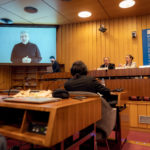
- Bruno Sportisse – PDG Inria / Tawfik Jelassi – UNESCO / Stéphanie Schaer – DINUM / Fackson Banda – UNESCO
-
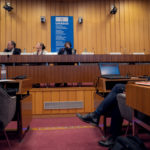
- Tawfik Jelassi – UNESCO / Stéphanie Schaer – DINUM / Fackson Banda – UNESCO / Roberto Di Cosmo – Director of Software Heritage
-
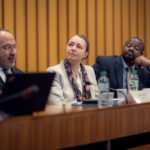
- Roberto Di Cosmo – Director of Software Heritage / Tawfik Jelassi – UNESCO / Stéphanie Schaer – DINUM / Fackson Banda – UNESCO
-
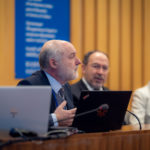
- Roberto Di Cosmo – Director of Software Heritage / Tawfik Jelassi – UNESCO / Stéphanie Schaer – DINUM
-
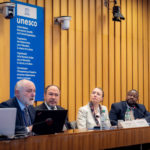
- Roberto Di Cosmo – Director of Software Heritage / Tawfik Jelassi – UNESCO / Stéphanie Schaer – DINUM / Fackson Banda – UNESCO
-
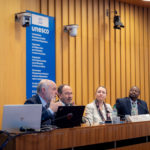
- Roberto Di Cosmo – Director of Software Heritage / Tawfik Jelassi – UNESCO / Stéphanie Schaer – DINUM / Fackson Banda – UNESCO
-
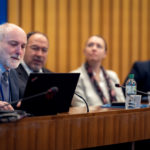
- Roberto Di Cosmo – Director of Software Heritage / Tawfik Jelassi – UNESCO / Stéphanie Schaer – DINUM / Fackson Banda – UNESCO
-
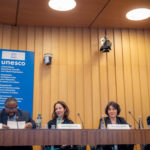
- Fackson Banda – UNESCO / Claire Gillissen-Duval – SAP / Natasa Milic-Frayling – Intas Digital / Brigitte Vézina – Creative Commons
-
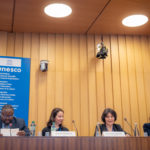
- Fackson Banda – UNESCO / Claire Gillissen-Duval – SAP / Natasa Milic-Frayling – Intas Digital / Brigitte Vézina – Creative Commons
-
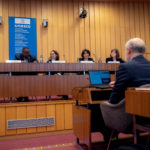
- Fackson Banda – UNESCO / Claire Gillissen-Duval – SAP / Natasa Milic-Frayling – Intas Digital / Brigitte Vézina – Creative Commons / Roberto Di Cosmo – Director of Software Heritage
-
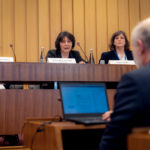
- Claire Gillissen-Duval – SAP / Natasa Milic-Frayling – Intas Digital / Brigitte Vézina – Creative Commons / Roberto Di Cosmo – Director of Software Heritage
-
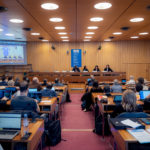
- Fackson Banda – UNESCO / Claire Gillissen-Duval – SAP / Natasa Milic-Frayling – Intas Digital / Brigitte Vézina – Creative Commons
-
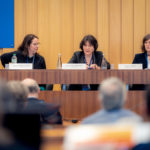
- Claire Gillissen-Duval – SAP / Natasa Milic-Frayling – Intas Digital / Brigitte Vézina – Creative Commons
-
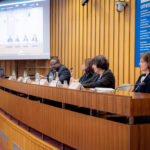
- Fackson Banda – UNESCO / Claire Gillissen-Duval – SAP / Natasa Milic-Frayling – Intas Digital / Brigitte Vézina – Creative Commons
-
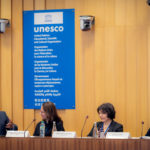
- Fackson Banda – UNESCO / Claire Gillissen-Duval – SAP / Natasa Milic-Frayling – Intas Digital / Brigitte Vézina – Creative Commons
-
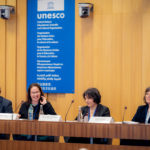
- Fackson Banda – UNESCO / Claire Gillissen-Duval – SAP / Natasa Milic-Frayling – Intas Digital / Brigitte Vézina – Creative Commons
-
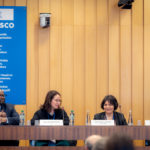
- Fackson Banda – UNESCO / Claire Gillissen-Duval – SAP / Natasa Milic-Frayling – Intas Digital / Brigitte Vézina – Creative Commons
-
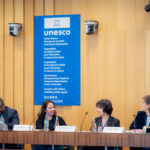
- Fackson Banda – UNESCO / Claire Gillissen-Duval – SAP / Natasa Milic-Frayling – Intas Digital / Brigitte Vézina – Creative Commons
-
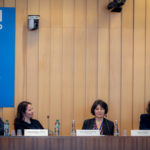
- Fackson Banda – UNESCO / Claire Gillissen-Duval – SAP / Natasa Milic-Frayling – Intas Digital / Brigitte Vézina – Creative Commons
-
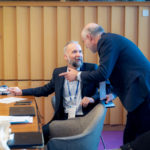
- Florent Kirchner Head of the French National Cybersecurity Strategy – Roberto Di Cosmo – Director of Software Heritage
-
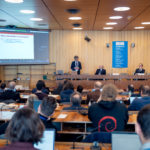
- Paolo Ferragina – Università di Pisa / Roberto Di Cosmo – Director of Software Heritage / Giovanni Ponti – ENEA
-
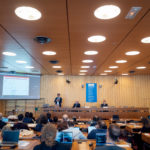
- Paolo Ferragina – Università di Pisa / Roberto Di Cosmo – Director of Software Heritage / Giovanni Ponti – ENEA
-
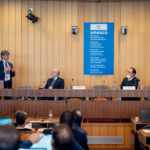
- Paolo Ferragina – Università di Pisa / Roberto Di Cosmo – Director of Software Heritage / Giovanni Ponti – ENEA
-
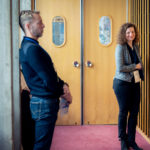
- Benoît Chauvet – software engineering manager / Morane Gruenpeter – software engineer and project manager
-
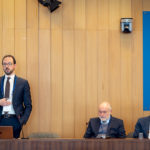
- Giovanni Ponti – ENEA / Roberto Di Cosmo – Director of Software Heritage / Paolo Ferragina – Università di Pisa
-
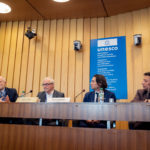
- Roberto Di Cosmo – Director of Software Heritage / Karel Luyben – President of EOSC Association / Steve Crawford – Open Source Science Initiative Lead – NASA / Bhanu R Neupane – Advisor – ICT and Sciences and Open Solutions – UNESCO
-
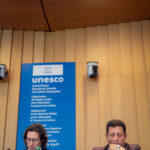
- Steve Crawford – Open Source Science Initiative Lead – NASA / Bhanu R Neupane – Advisor – ICT and Sciences and Open Solutions – UNESCO
-
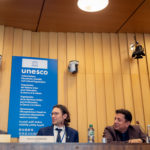
- Karel Luyben – President of EOSC Association / Steve Crawford – Open Source Science Initiative Lead – NASA / Bhanu R Neupane – Advisor – ICT and Sciences and Open Solutions – UNESCO / Software Heritage Symposium and Summit – UNESCO
-
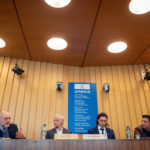
- Roberto Di Cosmo – Director of Software Heritage / Karel Luyben – President of EOSC Association / Steve Crawford – Open Source Science Initiative Lead – NASA / Bhanu R Neupane – Advisor – ICT and Sciences and Open Solutions – UNESCO / Software Heritage Symposium and Summit – UNESCO
-
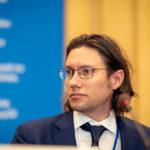
- Steve Crawford – Open Source Science Initiative Lead – NASA / Software Heritage Symposium and Summit – UNESCO
-
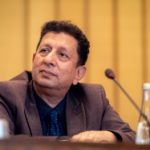
- Bhanu R Neupane – Advisor – ICT and Sciences and Open Solutions – UNESCO / Software Heritage Symposium and Summit – UNESCO
-
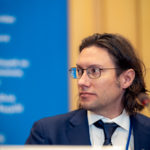
- Steve Crawford – Open Source Science Initiative Lead – NASA / Software Heritage Symposium and Summit – UNESCO
-
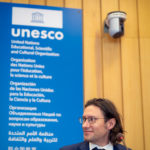
- Steve Crawford – Open Source Science Initiative Lead – NASA / Software Heritage Symposium and Summit – UNESCO
-
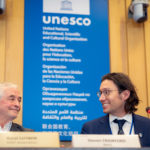
- Karel Luyben – President of EOSC Association / Steve Crawford – Open Source Science Initiative Lead – NASA / Software Heritage Symposium and Summit – UNESCO
-
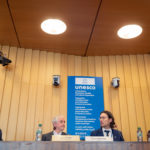
- Roberto Di Cosmo – Director of Software Heritage / Karel Luyben – President of EOSC Association / Steve Crawford – Open Source Science Initiative Lead – NASA / Bhanu R Neupane – Advisor – ICT and Sciences and Open Solutions – UNESCO / Software Heritage Symposium and Summit – UNESCO
-
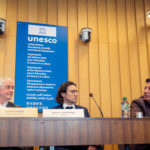
- Karel Luyben – President of EOSC Association / Steve Crawford – Open Source Science Initiative Lead – NASA / Bhanu R Neupane – Advisor – ICT and Sciences and Open Solutions – UNESCO
-
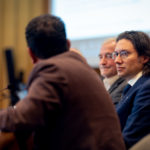
- Karel Luyben – President of EOSC Association / Steve Crawford – Open Source Science Initiative Lead – NASA
-
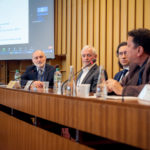
- Roberto Di Cosmo – Director of Software Heritage / Karel Luyben – President of EOSC Association / Steve Crawford – Open Source Science Initiative Lead – NASA / Bhanu R Neupane – Advisor – ICT and Sciences and Open Solutions – UNESCO
-
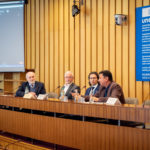
- Roberto Di Cosmo – Director of Software Heritage / Karel Luyben – President of EOSC Association / Steve Crawford – Open Source Science Initiative Lead – NASA / Bhanu R Neupane – Advisor – ICT and Sciences and Open Solutions – UNESCO
-
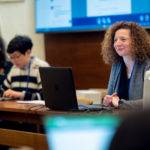
- Valentin Lorentz – Software engineer / Sabrina Granger – open science community manager / Morane Gruenpeter – Software engineer and project manager
-
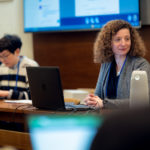
- Valentin Lorentz – Software engineer / Sabrina Granger – open science community manager / Morane Gruenpeter – Software engineer and project manager
-
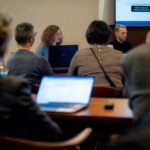
- Morane Gruenpeter – Software engineer and project manager / Benoît Chauvet – Software engineering manager
-
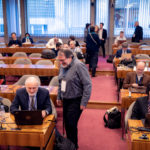
- Roberto Di Cosmo – Director of Software Heritage / Alexios Zavras – Intel / Software Heritage Symposium and Summit – UNESCO
All pictures © Inria / Photo B. Fourrier
